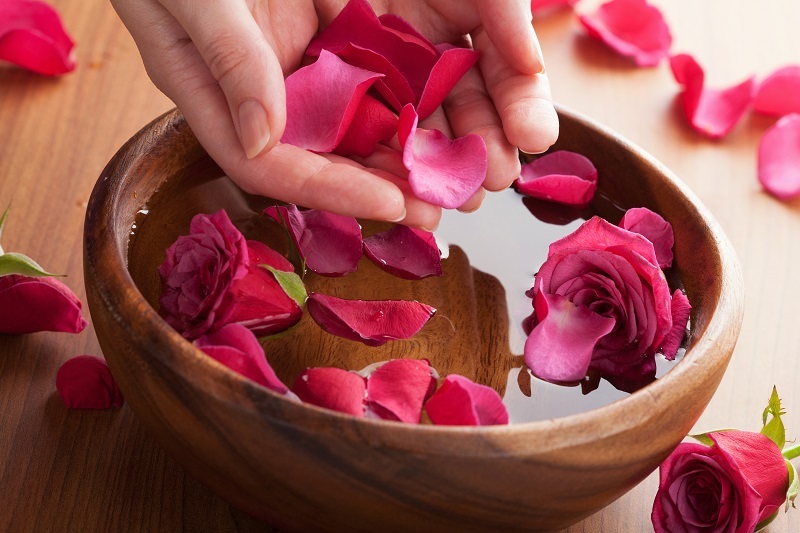Decoding the Red Rose Tradition on Valentine's Day
Posted on 14/08/2025
Decoding the Red Rose Tradition on Valentine's Day
Valentine's Day is synonymous with love and affection, and nothing symbolizes this special celebration more universally than a bouquet of red roses. The red rose tradition on Valentine's Day has become an emblem of romance across the globe, transcending cultures, languages, and generations. But why do people gift red roses on Valentine's Day? What makes these flowers the preferred choice for lovers, and what is the deeper meaning behind the red rose on Valentine's Day? In this in-depth article, we'll decode the red rose tradition on Valentine's Day, unraveling its history, symbolism, and relevance in the modern era.
- The Origins of the Red Rose Tradition
- Symbolism of Red Roses
- The Evolution of Valentine's Day and Roses
- Red Roses & Valentine's Day Around the World
- Contemporary Significance of Red Roses
- Alternatives and New Trends
- Frequently Asked Questions
The Origins of the Red Rose Tradition
From Ancient Myths to Modern-Day Rituals
The red rose's association with love stretches back thousands of years. Greek and Roman mythology frequently referenced roses as symbols of passion, beauty, and the gods' favor. For instance, the goddess Aphrodite (or Venus in Roman mythology) was often depicted adorned with roses, their petals said to have sprung from her blood in a tale of tragic love. These myths laid the groundwork for the red rose's enduring reputation as the ultimate floral emblem of romance.
In the Middle Ages, red roses maintained their connection to deep emotional sentiments. Courtly love, the chivalric and often secretive adoration between knights and ladies, frequently manifested through the gifting of flowers. It was during these centuries that the red rose's significance started transitioning from mystical origins to heartfelt gestures.
When St. Valentine's Day became a recognized day of romance during the 14th and 15th centuries, it was only natural that the red rose symbol became intertwined with the holiday. Geoffrey Chaucer and other poets of the time lauded the rose as the perfect emblem for courtship and affection.
Symbolism of Red Roses
What Does a Red Rose Really Mean?
The symbolism of red roses on Valentine's Day is far richer than simple attraction. Across cultures and ages, red roses have come to stand for:
- Passionate Love and Desire: The intense hue of a red rose perfectly captures the fervor of romantic love.
- Respect and Admiration: Roses of this color are often given as a mark of honor for someone deeply cherished.
- Courage and Sacrifice: In some histories, particularly referencing soldiers and martyrs, red roses have symbolized boldness and undying devotion.
On Valentine's Day, offering red roses is a time-honored way to express your feelings with a universally understood message: "I love you." The number of roses gifted also carries special connotations, with a single rose representing devotion at first sight, and a dozen delivering the message of completeness and perfection in love.
The Evolution of Valentine's Day and Roses
Victorian Era and the Language of Flowers
The Victorian era saw the rise of floriography, or the "language of flowers." Because direct expression of romantic sentiments was often discouraged in polite society, people relied on flowers to communicate their feelings. Each element, from the color to the number of flowers, carried its own message. Unsurprisingly, red roses quickly became the gold standard for expressing romantic love during this period.
Commercialization in the Modern World
As Valentine's Day gained popularity throughout the 20th century, it also became significantly commercialized. Today, an estimated $2 billion is spent annually on cut flowers for Valentine's Day in the United States alone. Red roses represent the vast majority of these purchases, making them the uncontested icon for Valentine's Day floral gifting.
Red Roses & Valentine's Day Around the World
Global Perspectives on the Red Rose Tradition
While the red rose tradition on Valentine's Day is powerful in Western countries, its popularity extends far beyond. Let's take a look at how different regions celebrate:
- United States & Canada: A dozen red roses are the quintessential romantic gift. Flower shops experience record business leading up to February 14th, with classic arrangements dominating the scene.
- United Kingdom: Roses are a primary choice, but other flowers such as lilies and tulips are also popular.
- Japan: Valentine's Day traditions focus on chocolate rather than flowers, but red roses are gaining ground among younger generations.
- Latin America: Valentine's Day (or 'Dia del Amor y la Amistad') celebrates both love and friendship. Red roses are preferred for romantic love, while yellow or white flowers symbolize friendship.
- India: As Western-style Valentine's Day celebrations become more common, red rose gifting has become a favorite for couples.
- China: Valentine's Day is growing in popularity, with red roses serving as a luxurious and thoughtful gesture.
Red roses have become an international language for love, bridging gaps between cultures and continents.
Contemporary Significance of Red Roses
The Enduring Allure of the Red Rose
In the digital age, where emojis, texts, and social media posts convey instant sentiments, the act of gifting a real red rose on Valentine's Day retains its unmatched charm. There is an intimacy and sincerity to giving flowers that digital artifacts simply cannot replicate.
Red roses on Valentine's Day continue to evoke powerful emotions, serving as a classic declaration of affection, whether exchanged in person or delivered via online florists. Additionally, the act of selecting, purchasing, and presenting roses shows intentionality and care, amplifying the message of devoted love.
The red rose tradition also supports local florists and the broader flower industry, making it an integral part of seasonal economies in many regions. For couples, red roses on Valentine's Day form enduring memories and key moments in their romantic journeys.
Alternatives and New Trends
Beyond the Red Rose: Personalizing Valentine's Day
While the classic red rose will always have a special role on Valentine's Day, many people now seek creative ways to express their feelings. Here are some trending alternatives:
- Other Flower Colors: Pink roses for admiration, yellow for friendship, white for purity, and orange for enthusiasm and fascination.
- Mixed Bouquets: Combining red roses with other varieties, such as lilies, orchids, or tulips, for a customized touch.
- Preserved Roses: These last for years, offering a lasting symbol of enduring love.
- Homegrown or Wildflowers: Adding environmental awareness and a personal element to floral gifting.
- Experiences: Pairing flowers with memorable activities like picnics, dinner dates, or shared adventures.
Despite these evolving trends, the red rose remains the tradition that sets the gold standard for Valentine's Day romance. For many, it's the blend of history, myth, and deeply personal meaning that keeps the red rose at the heart of Valentine's celebrations.
Frequently Asked Questions about the Red Rose Tradition on Valentine's Day
Why are red roses so popular on Valentine's Day?
Red roses symbolize passionate love and beauty thanks to their ancient associations with mythologies, literature, and art. Over centuries, they have become the universal floral symbol for romance, making them the default choice on Valentine's Day.
What does gifting a single red rose mean for Valentine's Day?
A single red rose traditionally expresses love at first sight or the idea that the recipient is "the one." It's a simple yet profound gesture for Valentine's Day.
Is there a meaning to the number of red roses gifted?
- 1 rose: Love at first sight
- 3 roses: "I love you"
- 12 roses: Perfect love or "Be mine"
- 50+ roses: Unconditional, limitless love
Can I mix red roses with other flowers for Valentine's Day?
Absolutely! Mixing red roses with other flowers adds personalized meaning to your bouquet. Combine with white for unity and harmony, pink for admiration, or other blooms that reflect your loved one's preferences.
Are red roses environmentally friendly to buy for Valentine's Day?
It depends on their source. To reduce environmental impact, choose locally grown or certified-sustainable roses. Some couples opt for potted roses or wildflower bouquets for an eco-friendlier twist on the tradition.
Conclusion: The Power of the Red Rose on Valentine's Day
The red rose tradition on Valentine's Day isn't just a passing fancy--it's rooted in centuries-old mythology, cultural symbolism, and shared human experiences. Whether you're sending a dozen long-stemmed red roses or a single, heartfelt bloom, you're participating in a timeless expression of love and devotion.
As you plan your own Valentine's Day celebration, consider the layers of meaning behind the simple act of giving a red rose. It's more than just a beautiful flower; it's a living symbol of passion, commitment, and the rich tapestry of human affection. Make your gesture count--after all, the tradition of red roses on Valentine's Day has stood the test of time for a reason.
Ready to decode and embrace the red rose tradition this Valentine's Day? Choose your blooms with care, let your intentions be known, and add another chapter to the storied legacy of red roses in love.


Latest Posts
Orchid Care Demystified: Expert Tips Inside
Decoding the Red Rose Tradition on Valentine's Day
Which floral icon captures your character






